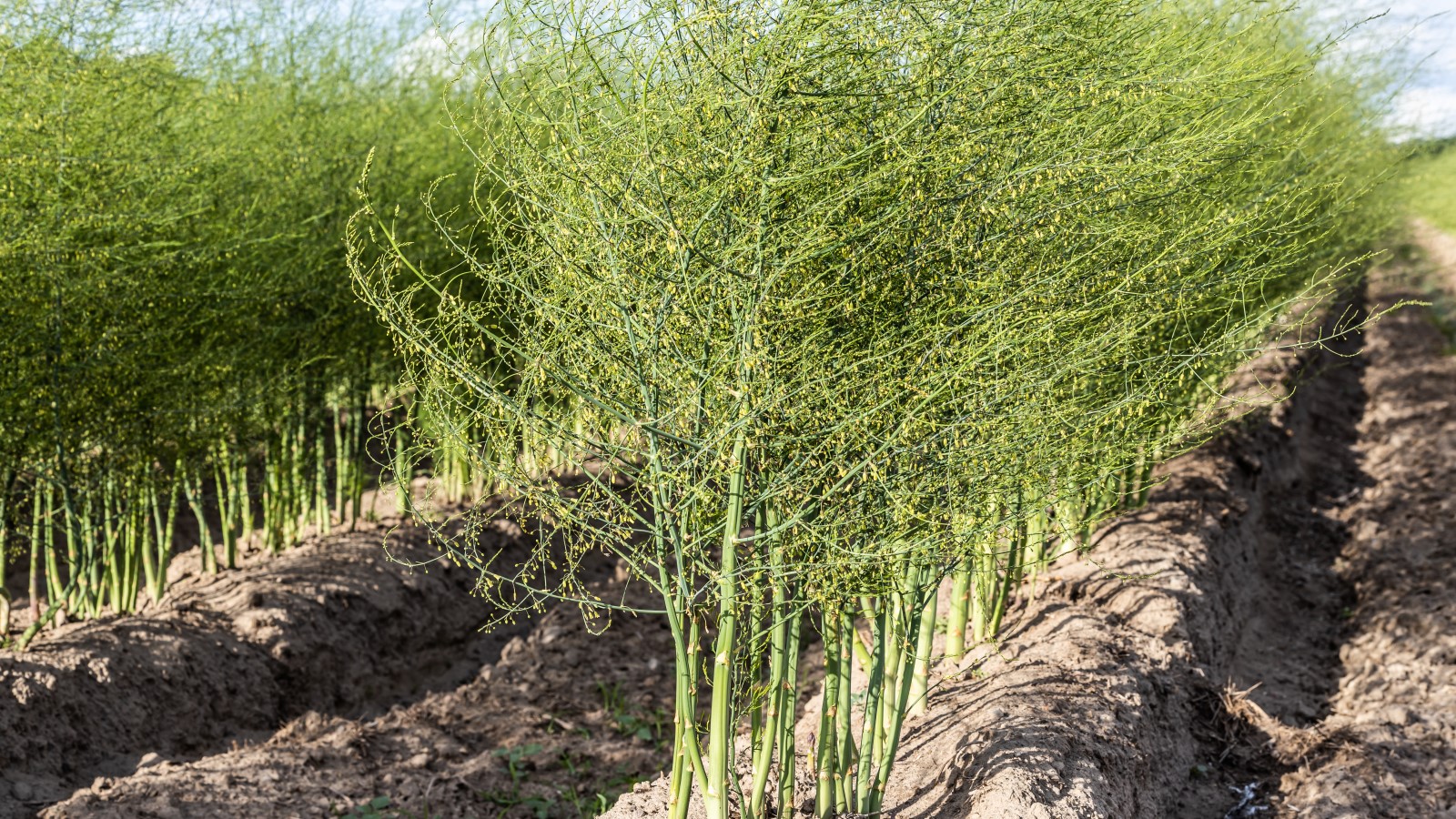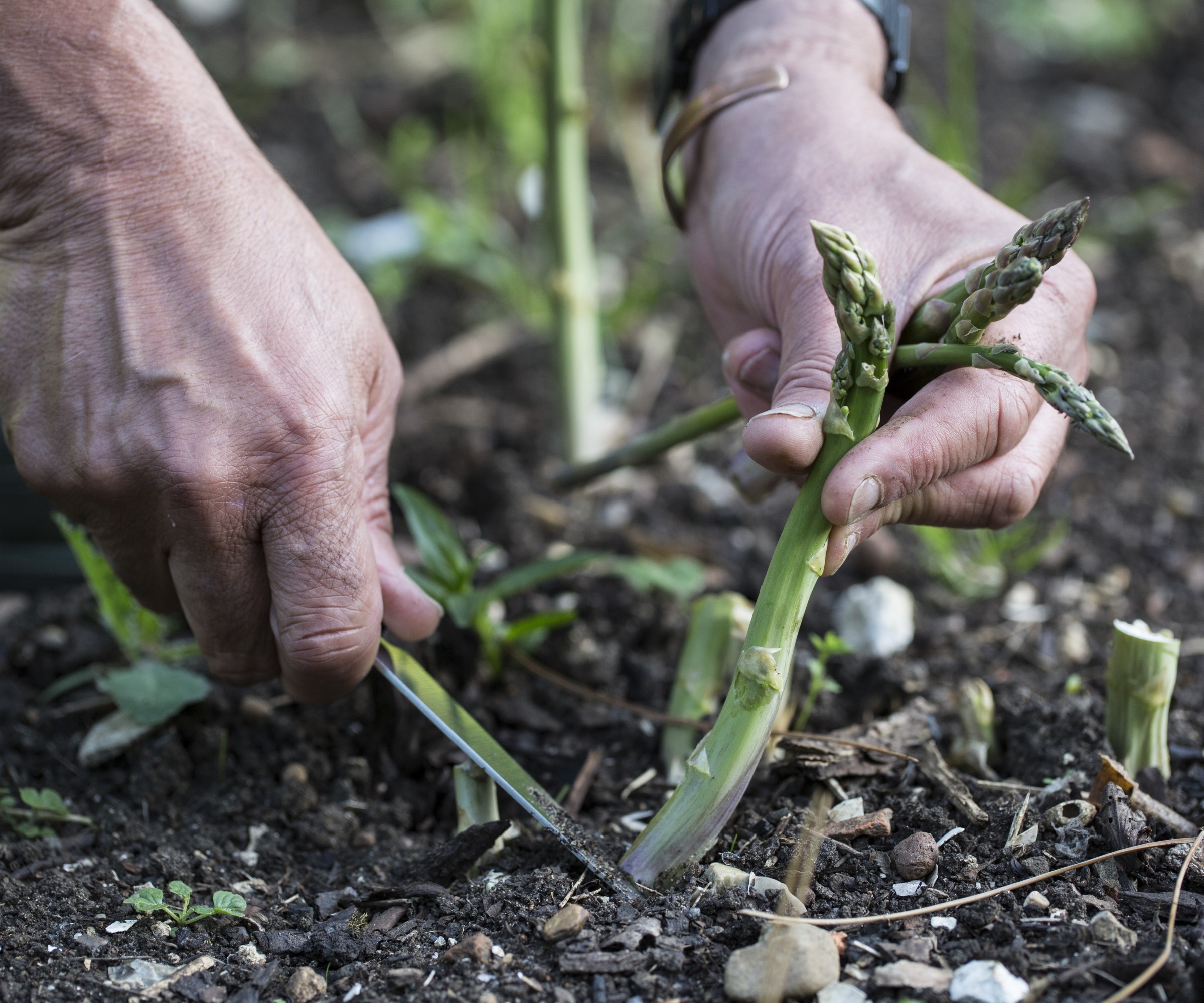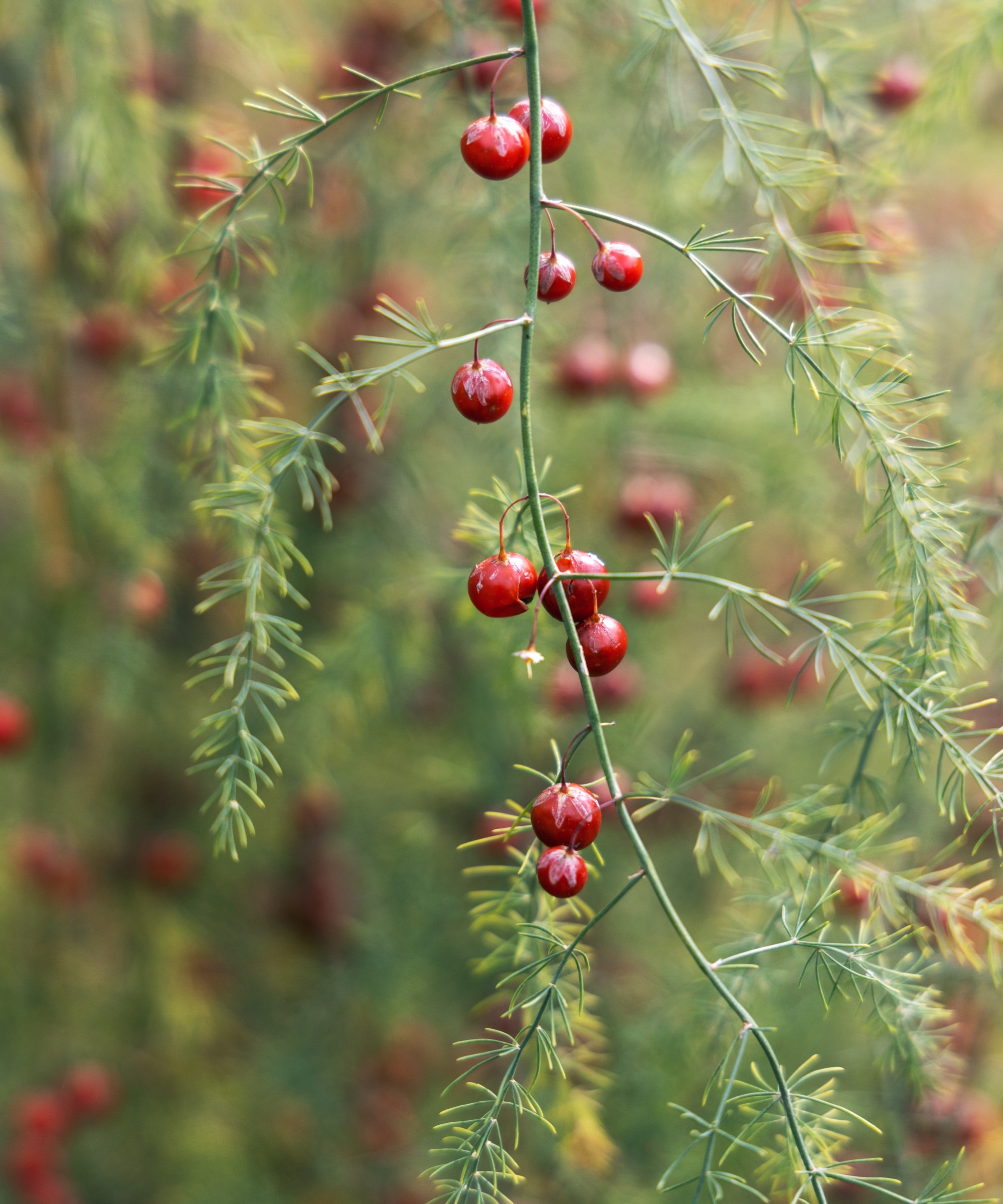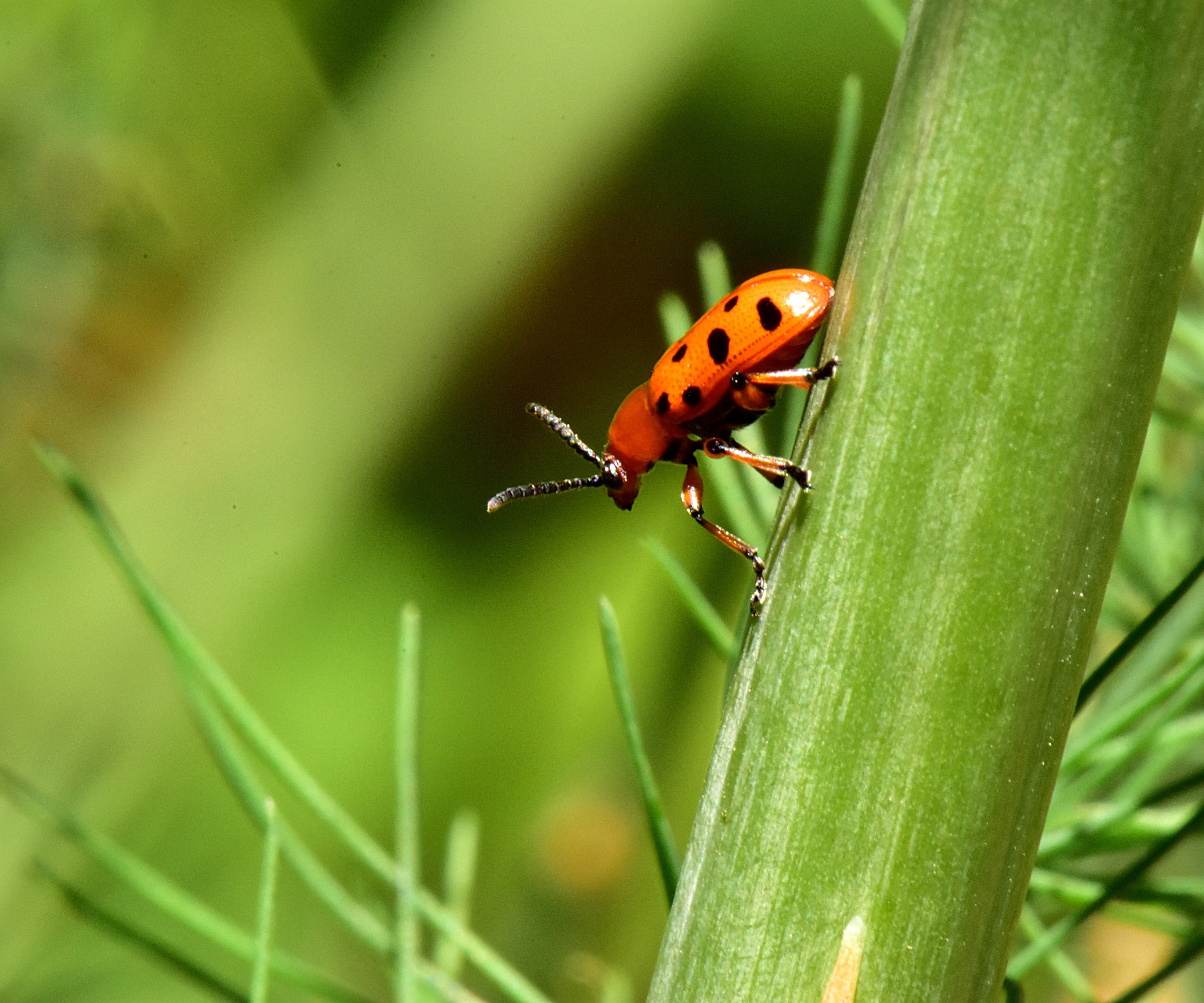When to cut back asparagus – pruning tips from an experienced kitchen gardener and asparagus grower
How to have the healthiest and most productive crowns by cutting them back at the right time of year


Asparagus are low-maintenance perennial vegetables that are capable of providing you with delicious spears in spring and early summer for decades if looked after properly. You do need to be patient as plants take three years to be ready to harvest, however, it is a crop that is worth the wait.
I have grown asparagus in kitchen gardens throughout my horticultural career and, though the asparagus season may be short each year, it is highly anticipated each time around and the stalks are always popular with chefs and the public.
Growing asparagus is fairly simple and there are only a few key maintenance tasks to remember each year. This includes letting the foliage grow at the end of the harvesting season and ensuring to cut back asparagus at the right time. Getting this correct is important to ensure your crowns continue to provide a great crop year-after-year.

Asparagus season tends to run for about eight weeks
When should I cut asparagus back?
Asparagus is a crop that has a very short harvesting period, coming into season for only six to eight weeks in spring and early summer. Once the harvesting season has finished, the plants are left to continue to grow. The spears will grow tall and develop into asparagus ferns that ultimately reach up to four feet in height.
The time for when to cut back asparagus ferns comes in fall, and it is important to cut it back at the correct time otherwise the future productivity of the crowns could be affected. While the asparagus ferns can potentially look messy in your kitchen garden, hold off from cutting them down too early. It is recommended to wait until that foliage has turned brown and yellow and died back. Depending on your US hardiness zone, this could come after the first frosts have hit.
Some of the asparagus ferns will fall naturally and can be removed as and when, however wait until the foliage all turns yellow before cutting all the asparagus stems back down to two inches above the ground. Use clean and sharp pruning shears to cut down the stems and then consider mulching the asparagus bed with a couple of inches of compost or well-rotted manure to protect the crowns and provide them with nutrients.
When you plant asparagus it takes two years until the time comes to start harvesting. For these first years it is important to let all spears grow fully and be left in place until they need pruning come winter. This helps crowns get established and build up the energy required to start being harvested when they are three years old.

Asparagus ferns are the result of stalks left to continue growing
Why are asparagus crowns cut back for winter?
The reason for letting the asparagus fern grow for so long is because producing spears takes a lot of energy out of the crowns. By letting the foliage grow and remain in place until it dies off, this means a lot of energy is taken down into the crowns to be stored ready to produce asparagus stalks next year. As asparagus crowns can be productive for over 20 years, this cycle helps ensure that the crowns continue to produce stalks year-after-year.
Cutting back asparagus come fall is also done in part to help battle asparagus beetles, as these pests are huge problems for asparagus. The larvae overwinter in the soil and adult beetles also overwinter either underground, protected by stems, or in leaf litter. Leaving the asparagus fern in place over winter helps protect the asparagus beetle, so cutting back asparagus for winter reduces the chance of the pest overwintering successfully to then feed on your asparagus next year.

Asparagus beetle can cause huge damage to plants
What happens if you cut back asparagus too early?
If you cut down your asparagus too soon, then the productivity of the crowns can be hit. The asparagus fern continues to provide nutrients and energy to the crown right until it is finally killed by the cold winter temperatures. Cutting down the asparagus early means less energy being produced to grow spears the following year.
As it takes a lot of energy to produce so many stems over a short period of time each harvesting season, the asparagus wants to conserve all the energy it can up until winter. Reducing the amount of energy by cutting down too soon means your asparagus crown may not be as productive as it could be next season.
Fertilizing asparagus throughout the year can help to give the crowns essential nutrients. Though this should always be done as well as letting the ferns grow and remain for as long as possible, rather than instead of.
If you do have some asparagus crowns and want to add more to your vegetable garden, then there are a few options open to you. This includes buying more crowns, growing new ones from seed, dividing your crowns, or trying to grow asparagus from cuttings. The latter may not be a traditional route to take, but cuttings can be rooted either in soil or water. If you are interested in adding asparagus to your vegetable garden, then see the range of asparagus seeds and plants available at Burpee.
Sign up to the Homes & Gardens newsletter
Design expertise in your inbox – from inspiring decorating ideas and beautiful celebrity homes to practical gardening advice and shopping round-ups.

Drew’s passion for gardening started with growing vegetables and salad in raised beds in a small urban terrace garden. He has worked as a professional gardener in historic gardens and specialises in growing vegetables, fruit, herbs, and cut flowers as a kitchen gardener. That passion for growing extends to being an allotmenteer, garden blogger, and producing how-to gardening guides for websites. Drew was shortlisted for the New Talent of the Year award at the 2023 Garden Media Guild Awards.
-
 These are the 6 must-have colors to decorate with in April 2025
These are the 6 must-have colors to decorate with in April 2025What do retro-inspired yellows and beautiful blues all have in common? They're on our hot list for the season ahead
By Sophia Pouget de St Victor Published
-
 Plants never to grow next to fruit trees
Plants never to grow next to fruit treesExpert advice on which plants to keep away from fruit trees to encourage a healthy harvest
By Jacky Parker Published